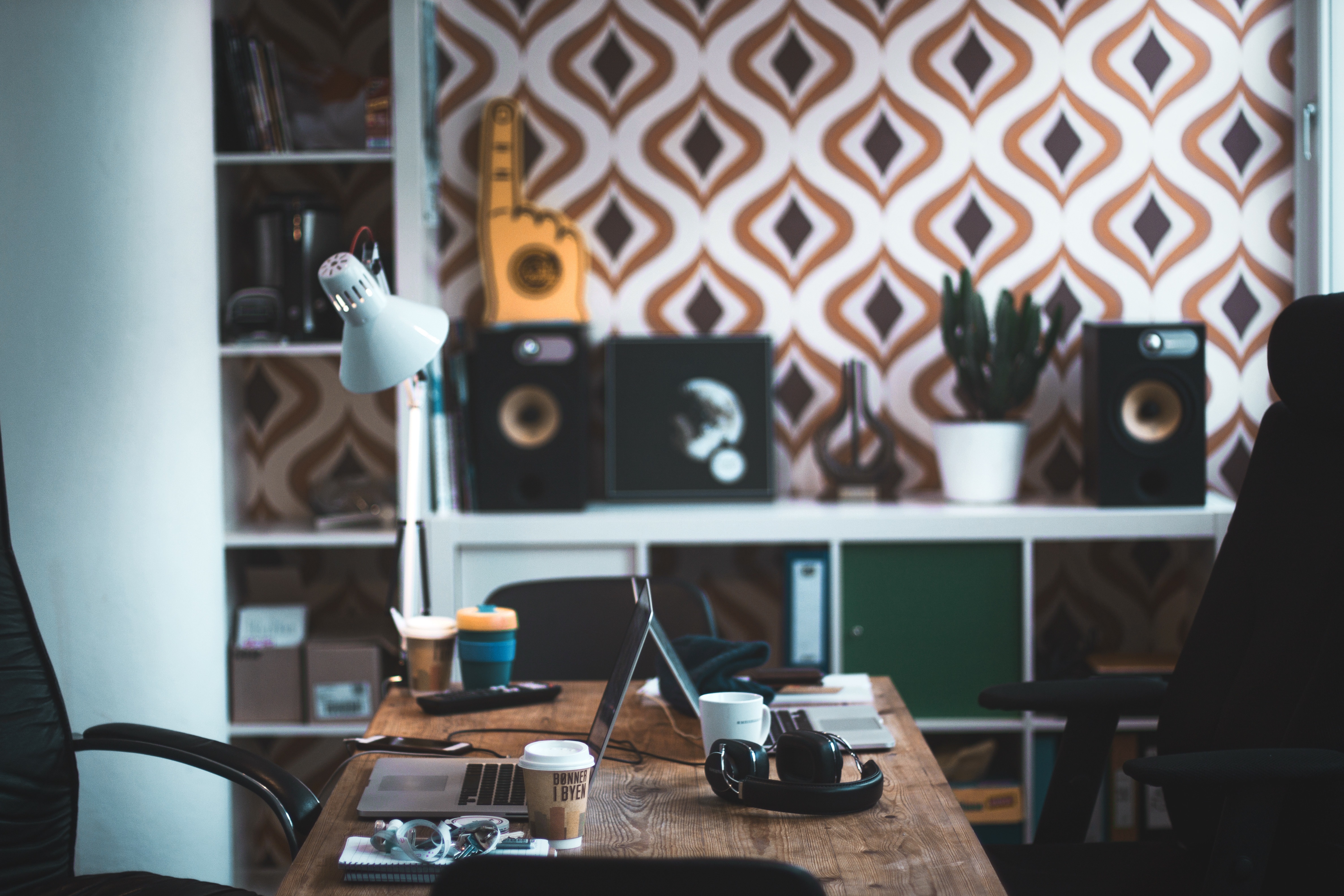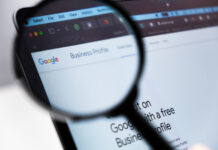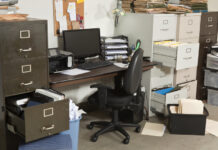While the messy desk may be a sign of genius (according to recent studies), that genius is probably pretty stressed out.
How do we know?
The geniuses at the Princeton University Neurosciences Institute report that the messy work area causes distraction and frustration far more than inspiration. They found:
“Multiple stimuli present in the visual field at the same time compete for neural representation by mutually suppressing their evoked activity throughout visual cortex, providing a neural correlate for the limited processing capacity of the visual system.”
Translated, this means that a cluttered environment reduces one’s ability to focus. It distracts and makes information processing tasks tougher. Just as a child distracts a parent with constant, “mom . . . mom . . . mom” or “dad . . . dad . . . dad,” clutter attracts attention, rendering you incapable of focus. Worse, your limited brain functioning then becomes taxed and you get frustrated, a sensation that can impede the flow of ideas. Research subjects were just less irritable, less distracted and more productive when they had a clean, organized work space.
It’s not just Princeton PhDs wagging their fingers at clutter keepers. In Los Angeles, UCLA researchers observed 32 Los Angeles families at different points in their days. Mothers’ stress hormones spiked when they had to juggle the ten-thousand belongings that go along with parenting. Researchers concluded that physical clutter overloads the senses, causing stress and impairing creative thinking.
And these are just two of the many studies linking productivity, happiness and clutter level.
Research may deliver best practices for productivity, but much of it remains in the realm of data and theory. Remaining neat and organized in times when every worker is overloaded is about as easy as eating healthy while driving past 10 fast food establishments on the way to work (a common occurrence). How to do it, particularly when organization doesn’t come naturally, can take some personal growth. With growth comes discomfort, even pain. But adopting new habits can feel exhilarating as well. Read through these tips to become more clear, relaxed and—best of all—productive when you clean up your work space!
Get in the Throw Away State of Mind
Mounds of papers, notes and office supplies competing for territory on your desk? So much that you resist tackling it at all costs?
The journey of 1,000 miles begins with the first step. And when de-cluttering, this first step is actually a great leap. Get a big garbage can or even a cardboard box or three so you can take all useless junk to recycle. Go through every pile one at a time and throw away anything that won’t impact your job over the next month. Only the most critical documents get put in the remaining “file” pile.
Clutter lovers feel both liberated and terrified while throwing away trash. The liberation comes because the absence of the paper translates into one less thing to do. The terror comes because the pain center in your brain actually lights up when you throw out an item you feel connected to. Just picking up a brochure or whitepaper and thinking, “this looks fascinating; I’ll read it!” creates that connection. Beware, it’s the primal wiring from the lizard brain tripping you up again. Use your more advanced cerebral cortex to override the pain and dismiss clutter from your life.
Once the junk is gone, the relief you feel soothes the pain you endured learning new habits. A new dedication to organization and the productivity that follows can even exhilarate you.
The Bling that Organizes Things
Each individual must create his or her own organization system, but everyone agrees that new organizational gear can put a little fun into the process. Start with what you already have: a desk, bookshelves, bookcases, in and out trays. Determine the ideal places for office supplies, choosing to hide staplers, scissors and more away to achieve that clutter free desk expanse. You may want to keep those items you use the most within arms reach. Reference books and unique equipment can go up high or behind closed closet doors as you’ll use them infrequently. Label each and every area so that you don’t forget what goes where.
If the tools you have at present don’t allow you to organize without stuffing drawers and file folders, invest in some new furnishings. Storage units (with doors to hide the pressure contained in papers and objects), in and out trays and wheeled shelving carts help you organize by project.
Now, with all drawers, cabinets and file folders labeled, put on the fun music and toss everything in the right place.
What Big Pieces Can Go?
With everything put away, look around to see whether a call is in order to haul away an extra file cabinet, end table, lamp or other item your organization has rendered unnecessary. The less furniture in your room, the more focused and therefore productive you’ll become.
This three-dimensional free space can be compared to the white space in a document. All readers of brochures need areas for their minds to rest. Similarly, all workers can use blank spaces in their offices to stare at while new, creative ideas bubble up without distraction.
Clean Surfaces
With excess paper and furnishings out of the way, now is the time to apply the final shine.
Dusting and polishing evokes two mental states: clarity and pride. Stains on your desk distract as much as the dust gathering under the printer and the crumb trail leading to the door. Seeing these environmental blemishes prompts thoughts like, “I’ve got to get that cleaned up” or “It’s so gross in here!” These thoughts not only interrupt, they progress to frustration, an emotion that inhibits creativity and flow. Wipe and vacuum away these distractions so you can work with ease.
Having an office free of dirt also builds pride. When one feels deserving of a well-appointed work environment, the ensuing confidence motivates her to state opinions clearly, without frustration. It also helps her advocate ideas assertively. The clean, organized office also imparts a sense of control. Workers who feel in control get that “top-of-my-game” sensation and get more done. Bing. Bang. Boom.
The office environment isn’t the only place cleanliness and organization leads to confidence and higher productivity. Montessori Schools, too, believe that equipment and environment contribute to learning. They use only high quality, attractive and clean instructional materials to impart that students should always respect themselves, the lesson and the learning experience. When knowledge workers adopt this approach, they work faster and more efficiently.
Office Organization
With only the most necessary documents and furnishings remaining, now you can organize for maximum productivity.
Organizational experts encourage workers to create a “catch-it” space at the entrance to the office or cubicle. This area keeps coats, umbrellas, shoes and purses in one place, leaving the workspace free. It should also be the place where both the trash can (large!) and a tray for incoming documents sits. They also recommend having an out-going space, where everything that must go to other team members lives. Both of these centers should be close to the door. With this set-up, you focus only on the most critical, time-sensitive tasks. Future work and clutter fades into the distance.
As for your desk, creating two zones, one for computer work and one for all other work helps you utilize two mindsets. At the computer, you work fast and furiously. On the computer-free desk expanse, you slow down and think deeply about the documents you may be signing or the printed material you need to read. Going back and forth between the two modes combats fatigue. It also creates the variety in work necessary to avoid burn out.
Find a Home-Based Business to Start-Up >>> Hundreds of Business Listings.

















































